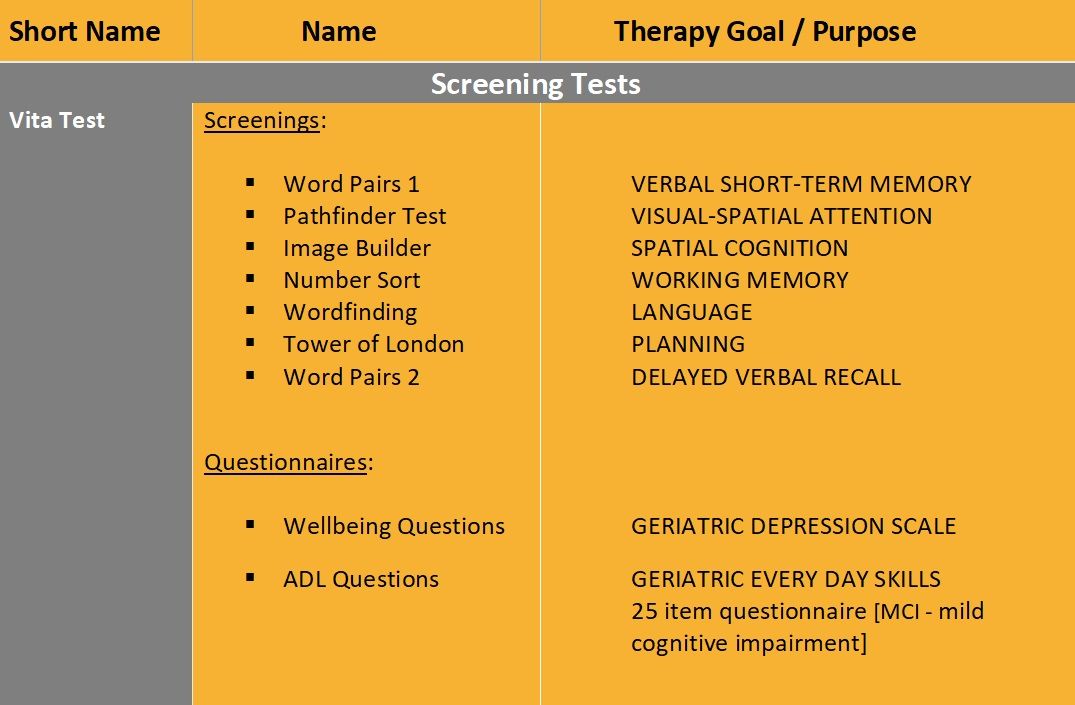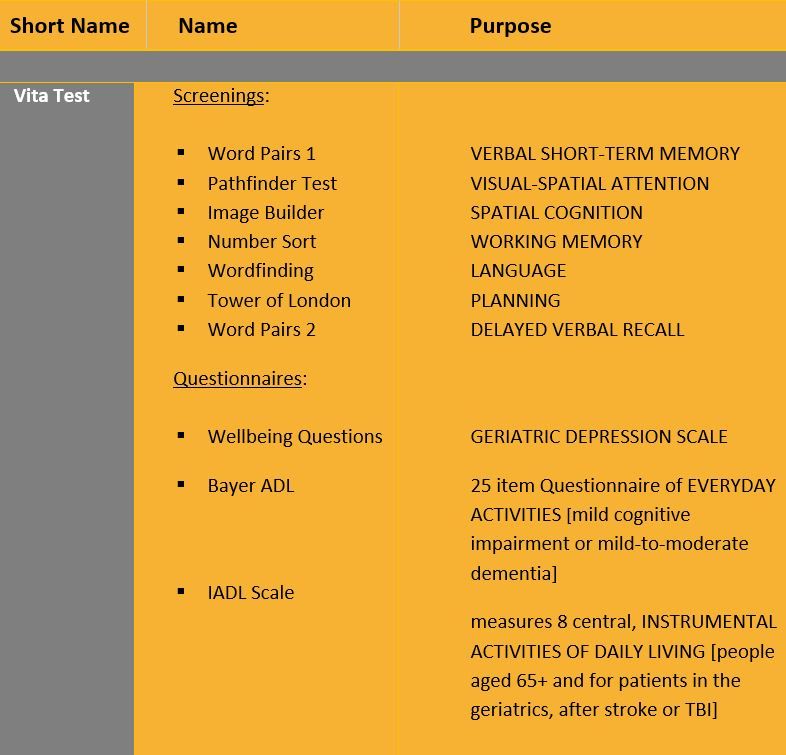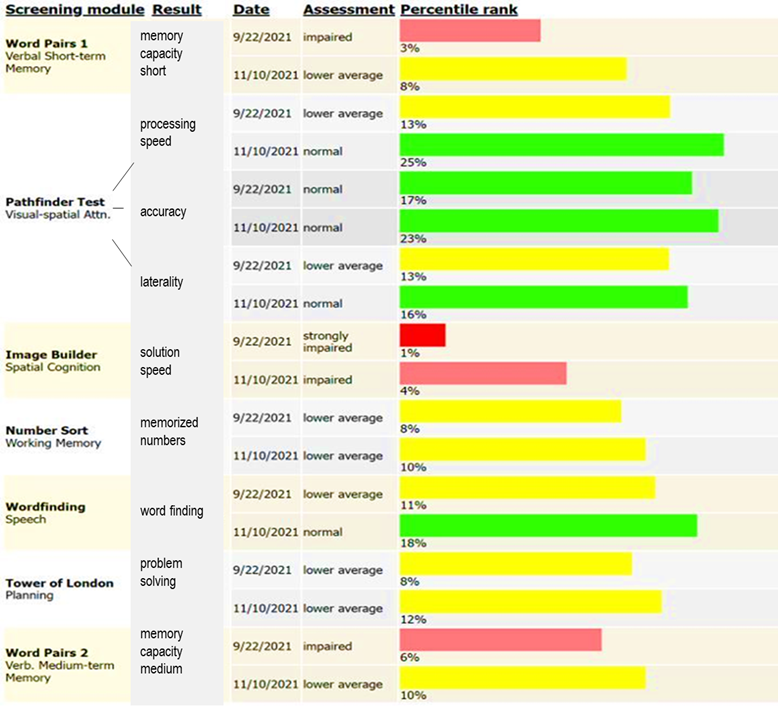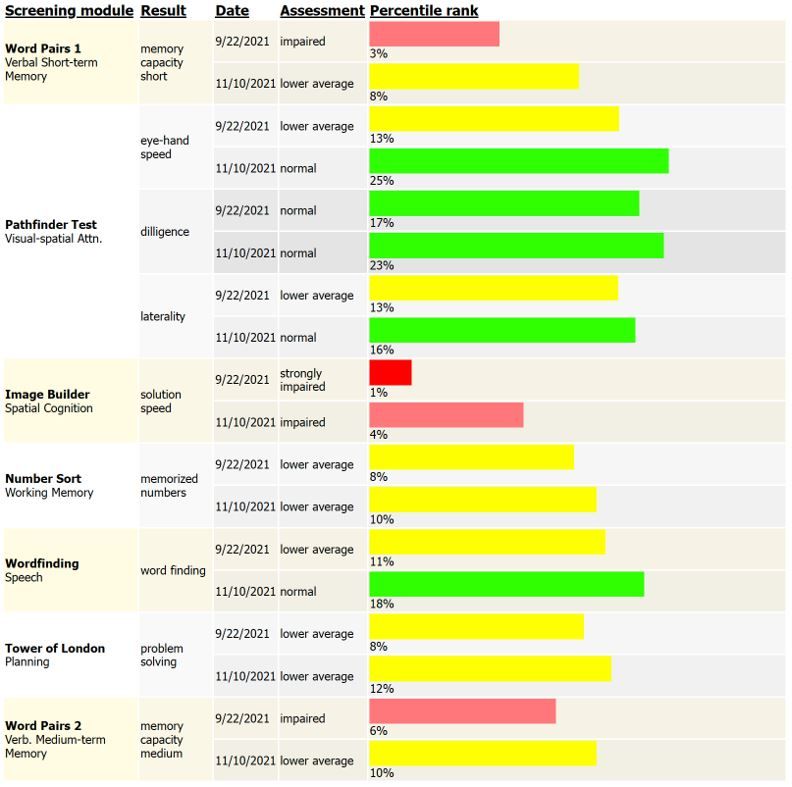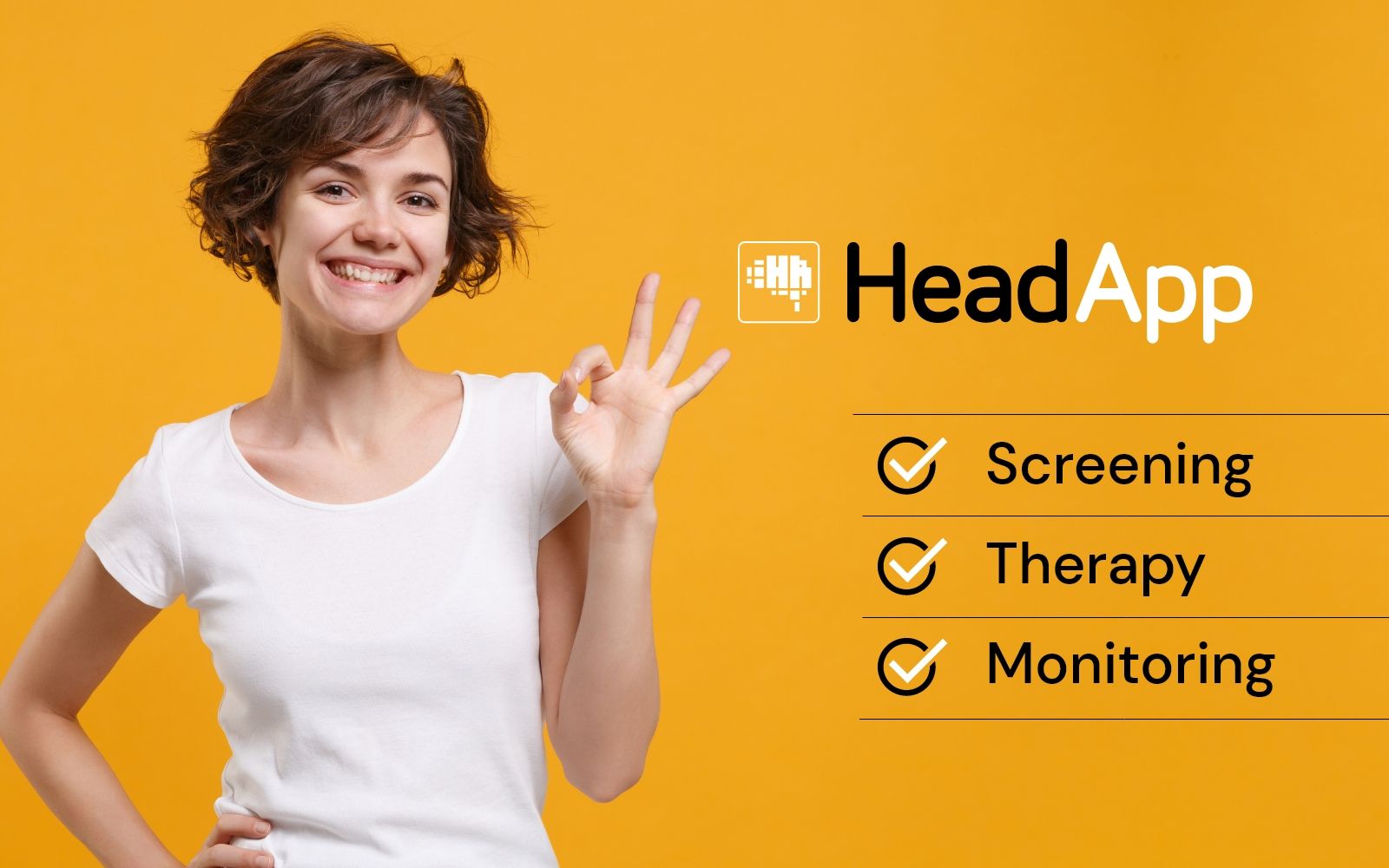Cognitive Screening
Identifies deficits and assembles a customized training program to suit the client’s specific needs

The Screenings are used for the early identification of individuals at potential risk for cognitive disorder, they indicate need for further evaluation or intervention and they are used to monitor the response to the intervention.
HeadApps´ Screening battery consists of 7 clinically-validated short cognitive tests and 2 questionnaires. Patients can undergo the full suite of tests or perform individual specific tests.
The test battery identifies strengths and weaknesses in the areas of memory, attention, processing speed, working memory, executive functions, language, functional performance in activities of daily living, and mental well-being. This online cognitive screening battery shows how people score compared to people the same age and gender.
Screening battery overview
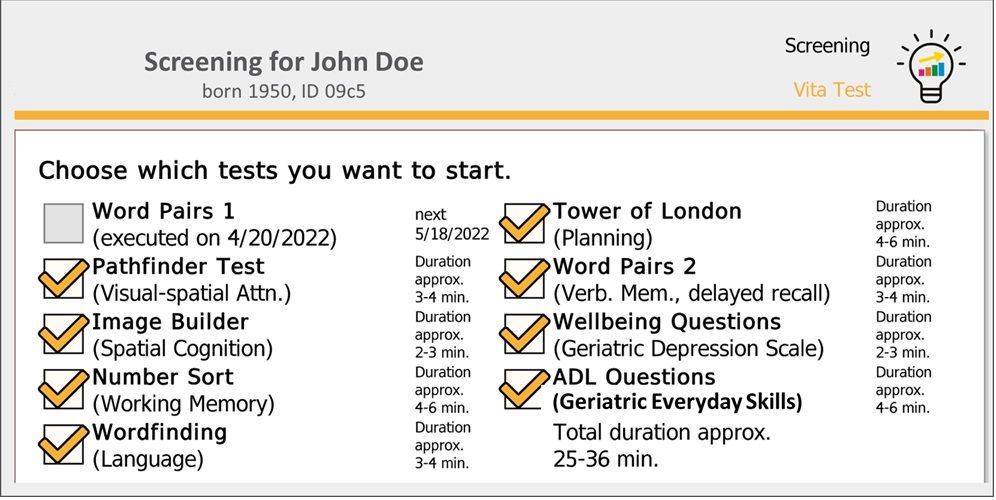
Screening results
The screenings are designed to assist the therapist in finding the most appropriate therapy modules.
They can detect which cognitive deficit the patient may have and which degree of severity can be found. As a result, and this is of great added value, the system automatically recommends therapy modules that are most suitable to address the specific cognitive deficits of the client.
Each screening has its own specific minimum duration corresponding to the respective test goal. The screenings last between 2 to 6 minutes. The maximum total length of all screenings is about 45 minutes. Thanks to the color coding, the strengths and weaknesses of the clients can be seen in one view.
A Screening Test Series with Three Versions: Repeatable at Any Time
The screening assessments can be repeated at any time. Each test is available in three parallel versions to facilitate repeated use. However, we recommend waiting about four weeks between repetitions, depending on the frequency and intensity of the client’s training, to minimize learning effects and accurately assess therapeutic progress.
Results interpretation
with a percentile rank <= 2% as “strongly impaired”
with a percentile rank <= 7% as “impaired”
with a percentile rank <= 16% as “lower average”
all other results as “normal” or better
Automatic therapy recommendation
If the performance in a test is “lower average” or worse, suitable therapy modules are suggested. When the patient starts training, a level of difficulty is automatically selected that corresponds to the level of performance. If the training offers special setting options, these are carried out according to the test results.
Special feature of the pathfinder test result “laterality” – neglect / hemianopsia indication
If the pathfinder test detects a slowdown on the right or left visual field, this indicates a neglect or a hemianopsia. The basic setting of the patient is changed in accordance with the test results, as a result of which this information affects all therapy programs. If the result is “strongly impaired”, the optokinetic stimulation (OKS) is activated. If the patient cannot tolerate OKS, this must be deactivated manually in the “Patient-> Edit” window.
Template for Written Interpretation of Cognitive Screening Results
The following document (link) serves as a template and guide for drafting written interpretations of cognitive screening results. The results are categorized into “Strongly Impaired,” “Impaired,” “Lower Average,” and “Normal”. Template for Written Interpretation of Cognitive Screening Results
The screening tests were developed by the University Hospital Cologne.
The tests were standardized in the dissertation by Yalda Khani, titled “TabScreen – A Tablet-Based Screening for Cognitive Impairment,” completed in 2019 at the Faculty of Medicine, University of Cologne. The initial sample included 100 participants, with 52 cognitively normal individuals and 48 with impairments.
The sample was later expanded to 3,353 participants aged 6 to 70+, including 1,551 males and 1,802 females. Children and adolescents (6–20 years) are exceptionally well represented with 1,441 participants, while adults are strongly represented across all age ranges, particularly 20–30 years (591), 40–50 years (407), 50–60 years (367), and 60–70+ years (224). This provides robust normative data for all age groups, supporting accurate cognitive assessment across the lifespan.
